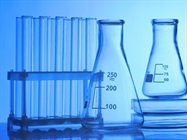
What is titration?
Titration is used to determine the concentration of a substance in a solution. Titration instruments use acid/base titration and include pH meters and pH indicator solution so that you know when the desired endpoint has been reached. A potentiometer or redox indicator solution is used in an oxidation-reduction (redox) titration. Titration equipment often includes an indicator that changes to a distinct color when the endpoint of the reaction is met, with each type of titration having its own specific indicator.
Titrations applications include:
- Pharmaceutical
- Foods and beverage analysis
- Environmental testing
- Petrochemicals
- And more ...
Range of titration equipment:
The type of titration equipment needed depends on the type of titration being done. While all titration needs some basic equipment, such as reagents, burets, pipettes, volumetric flasks, and stirrers, some titration equipment is specific to the kind of titration being performed.
Common types of titration instrument include:
- Automatic Titrator
- Karl Fischer Titrator
- Potentiometric Titrator
- Thermometric Titrator




Consideration when purchasing titration equipment:
Top features to keep in mind when purchasing for a titration system is the type of titration system required for your application, such as acid/base, Karl Fischer, potentiometric, complexometric, precipitation, etc.; measurement modes, such as pH, oxidation–reduction potential (ORP), temperature, acidity, alkalinity, etc.; pH Range; resolution; and the number of samples that a titration system, especially the automatic systems can process.
Click on the links below to discover and compare titration systems from various manufacturers: